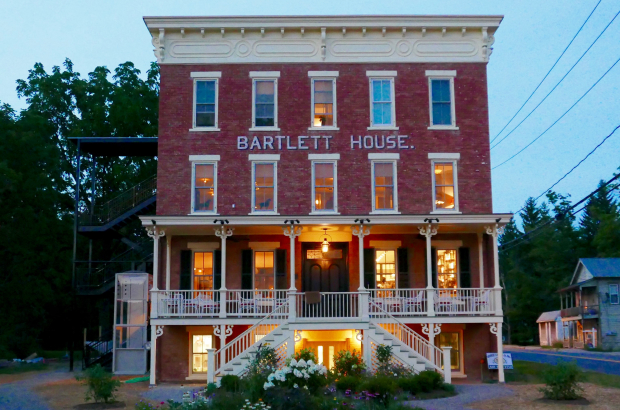- Daily & Weekly newsletters
- Buy & download The Bulletin
- Comment on our articles
Ghent, New York, celebrates 200 years
From Flanders Today: In the Hudson Valley town of Chatham, New York, it’s not unusual to hear a little Dutch. “Als de ziele luistert,” recites Nicole Fournée, co-owner of Chatham Bookstore, “spreekt het al een taal dat leeft. Isn’t that beautiful? It was written by the Flemish poet Guido Gezelle.”
Raised in the Netherlands, Fournée read the poem during the seventh edition of In Other Words, a celebration of poetry from around the world. Gezelle was born in Bruges in 1830, a few months before Belgian independence.
My presence at the event last month was due to participation in Omi Writers, a literary residency in the neighbouring town, Ghent. This town of about 5,400 people was founded in 1818 and took its named from the Treaty of Ghent, signed in 1814, ending the War of 1812 between the US and England.
The Ghent we know – the capital of East Flanders – was then part of the United Kingdom of the Netherlands. The warring factions agreed to negotiate a treaty there because it was neutral territory.
Although there is no specific historical record on the naming of the New York town, about 200 kilometres from New York City, it’s believed that a certain politician could be responsible. “Martin Van Buren, who was a member of the New York State Senate at the time, might have had something to do with it,” says Gregg Berninger, Ghent, New York’s official historian.
Van Buren was of Dutch descent, and Dutch was his first language. “He was born just a few miles from here, in Kinderhook, and his cousins lived here,” says Berninger. “I believe he might have had an interest in naming this town after the city in Flanders.”
Tiny towns, big history
Ghent’s bicentennial celebration also took place during my stay, at the Veteran of Foreign Wars Hall. More than 200 people attended, locals who know each other from the bakery or hardware store or petrol station.
Behind the podium stood veterans who recalled the long gone barber shop where they had to sit and wait while the proprietor stepped out to fetch the mail from the train and old-timers who reminisced about the days when they used to hit a baseball not too far from where we stood.
Since I have lived in Flanders for many years before moving to Brussels, Berninger thought it would be nice to have me say a few words. I told them how moved I was to be there, celebrating the town’s bicentennial with them. “Happy birthday, Ghent,” I said at the end, and people approached me to shake my hand, offer me a glass of wine and tell me about their trips to Europe.
Ghent isn’t the only town in New York named after a Belgian counterpart. There’s an Antwerp and a Waterloo, New York, as well as Austerlitz, a name that, again, might have to do with Van Buren. “A short man himself, he was an admirer of Napoleon,” said Berninger. “So when he found out a town had been named Waterloo, he took steps to name another town Austerlitz, after another of Napoleon’s battles.”
Belgian heritage
Antwerp, in Jefferson County, near the border with Canada, was founded in 1810. It was named after the hometown of Charles Michael De Wolf, one of the early investors who had bought a large plot of land in the village. He later sold the property to the Antwerp Company – a group of investors from the city who bought up large plots of land in northern New York – for 680,000 florins.
Cross over America’s Great Lakes to Wisconsin, meanwhile, to find Brussels, which was founded in 1858. It was settled in 1856 by a few families who immigrated from the Brabant area and hasn’t grown much since, home now to just over 1,000 people.
The county in which Brussels, Wisconsin, is located makes the most of its history, with tourist suggestions highlighting a sense of Belgian history, farmhouses and traditional tiny chapels alongside the roads. It is also home to a Belgian American Club and the Belgian Heritage Center. Some traditions remain, too, such as the annual kermiss on the first Sunday of September.
Photo: The 19th-century Bartlett House, on the iconic Route 66, which runs through Ghent, New York. The former bustling hotel is now a restaurant, bakery and shop ©Courtesy Lagonia Construction



















